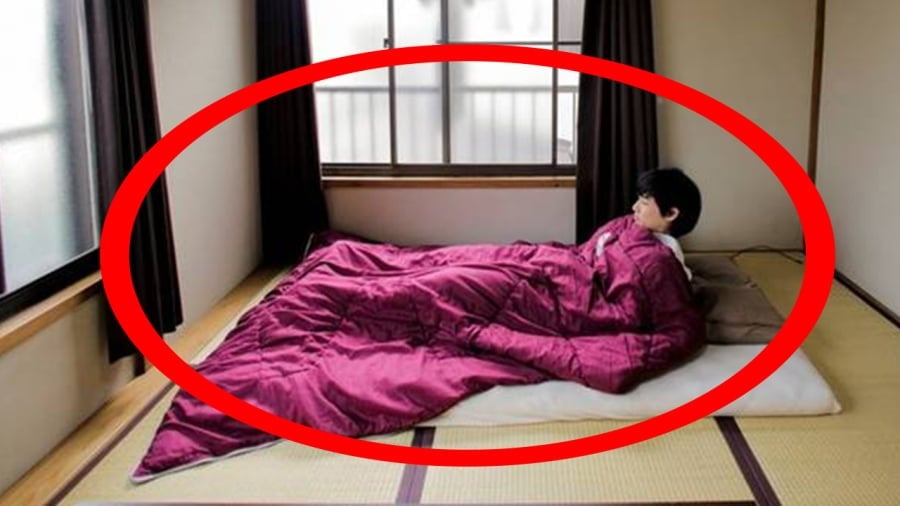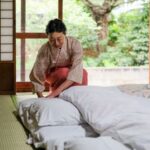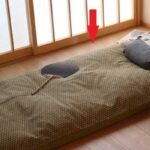There’s something special about the feeling of sleeping on a comfortable bed, but the Japanese have a unique preference. Despite owning modern and wealthy homes, they opt for sleeping on the floor. What’s the reason behind this intriguing choice?
Making the Most of Living Spaces
In Japan, most households use tatami mats, a versatile piece of furniture. Tatami mats serve multiple purposes, from regular flooring to a space for entertaining guests or a cozy bed when needed.
With limited living space due to high population density, tatami mats help conserve area and create a minimalist aesthetic. Plus, most homes have built-in heating systems, ensuring warmth even during chilly winters.

Tatami mats are a common feature in Japanese households.
Ensuring Children’s Safety
The Japanese believe that sleeping on the floor is safer for young children. When kids sleep on a bed, they might roll over without parental supervision, posing a potential hazard. Floor sleeping provides freedom for children to roll and crawl without the risk of falling.
Preparedness for Natural Disasters
Japan is prone to earthquakes, so its citizens are always prepared. Being able to sense vibrations and quickly escape to safety is crucial. Sleeping on the floor allows Japanese people to detect tremors promptly and move to a secure location.
Additionally, having minimal furniture makes it easier to evacuate during an earthquake. This cultural practice showcases the Japanese people’s resilience and adaptability to their environment.
Health Benefits
Many Japanese believe that sleeping on a soft bed isn’t ideal for joint health. They prefer a bed with moderate firmness, neither too hard nor too soft. Sleeping on a flat, hard surface provides back support and improves blood circulation by evenly distributing body weight and reducing pressure on various body parts.
While soft beds might feel comfortable, over time, the mattress can sag, leading to spinal curvature and back pain. Moreover, sleeping on the floor reduces the risk of falls for the elderly when getting up during the night.

Japanese people believe that sleeping on a very soft bed is not good for the joints.
The Japanese don’t just sleep on wooden floors; they also use tatami mats or thin mattresses. Tatami mats are made from tightly packed straw, providing a comfortable and bouncy surface. Japanese pillows are typically smaller, and their filling is made from various types of seeds. Although these pillows may feel firmer than standard feather or fiber-filled ones, they offer better support for the neck and head.
Easier to Get Up in the Morning
Another reason why the Japanese prefer sleeping on the floor is that it makes waking up in the morning easier. Many people struggle with getting out of bed early due to the cozy warmth and the potential for sore muscles from sleeping in awkward positions. Sleeping on the floor improves sleep quality and reduces the feeling of being tied down by blankets and pillows.
Cultural Tradition
Last but not least, the tradition of sleeping on the floor has deep roots in Japanese culture. This practice has been passed down for thousands of years, and it’s an integral part of the unique lifestyle in the Land of the Rising Sun.





































